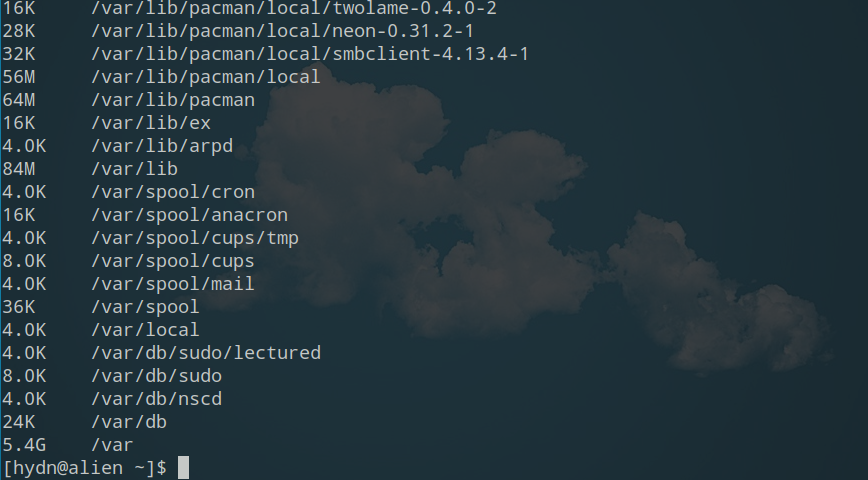

du - estimate and summarize file and directory space usage on Linux
source link: https://haydenjames.io/du-estimate-and-summarize-file-and-directory-space-usage-on-linux/
Go to the source link to view the article. You can view the picture content, updated content and better typesetting reading experience. If the link is broken, please click the button below to view the snapshot at that time.

This du command guide is a follow-up of my previous 90 Linux Commands frequently used by Linux Sysadmins article. Every week, or as time allows, I will publish articles on the ~ 90 commands geared toward Linux sysadmins and Linux power users. Let’s continue this series with the du command.
du (disk usage) command is a standard Unix program used to estimate file space used under a particular directory or files on a file system. du takes a single argument, specifying a pathname for du to work. If the path is not given, the working directory is used. On Linux, some of the available du options are:
-a,--all– write counts for all files, not just directories.--apparent-size– print apparent sizes, rather than disk usage. (Although the apparent size is usually smaller, it may be larger due to internal fragmentation, indirect blocks, etc.-B,--block-size=SIZE– scale sizes by SIZE before printing them. (e.g., ‘-BM’ prints sizes in units of 1,048,576 bytes.)-b,--bytes– equivalent to ‘--apparent-size --block-size=1‘-c,--total– produce a grand-total.-D,--dereference-args– dereference only symlinks that are listed on the command line.-d,--max-depth=N– print the total for a directory (or file, with –all) only if it is N or fewer levels below the command line argument;--max-depth=0is the same as –summarize.--files0-from=F– summarize disk usage of the NUL-terminated file names specified in file F; if F is -, then read names from standard input.-h,--human-readable– print sizes in human-readable format (e.g., 1K 234M 2G).--inodes– list inode usage information instead of block usage.-klike--block-size=1K-L,--dereference– dereference all symbolic links.-l,--count-links– count sizes many times if hard-linked.-m like --block-size=1M-P,--no-dereference– don’t follow any symbolic links (this is the default).-S,--separate-dirs– for directories, do not include the size of subdirectories.

du disk usage command examples
To list the sizes of a directory and any subdirectories in the given unit (B/KB/MB), use:
du -b|k|m path/to/directory
To list the sizes of a directory and any subdirectories in human-readable form (i.e., auto-selecting the appropriate unit for each size), use:
du -h path/to/directory
To show the size of a single directory, in human-readable units, use:
du -sh path/to/directory
To list the human-readable sizes of a directory and of all the files and directories within it, use:
du -ah path/to/directory
To list the human-readable sizes of a directory and any subdirectories, up to N levels deep, use:
du -h --max-depth=N path/to/directory
To list the human-readable size of all .jpg files in subdirectories of the current directory and show a cumulative total at the end, use:
du -ch */*.jpg
du command useful reading:
du alternatives and related commands:
Recommend
About Joyk
Aggregate valuable and interesting links.
Joyk means Joy of geeK